

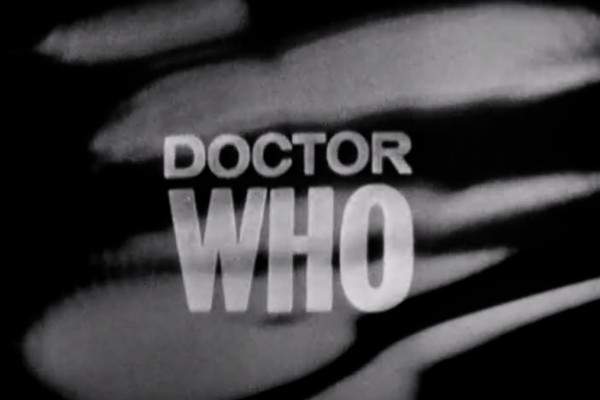
Hartnell's time on the series lasted until October 1966, during which the UK had experienced "Dalekmania", the death of a companion, and, in the final event, the first regeneration. Please join me as I rank all the William Hartnell Doctor Who stories, from worst to best...
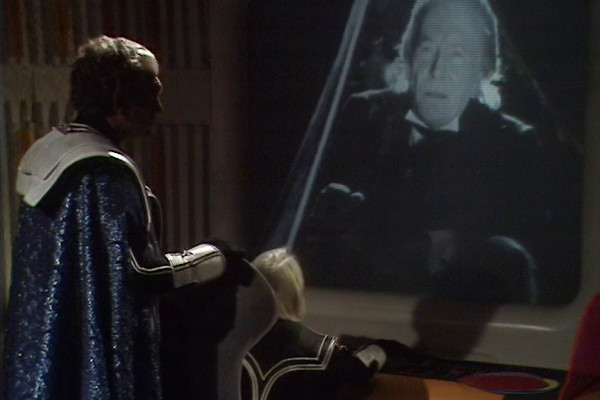
This ranking of the William Hartnell era features story write-ups that are a little longer than usual, given that there's so much more to say. This is not only the formative years of a highly entertaining TV series, but also the story of a man whose reputation has been tainted in fandom since his death. Both personally and professionally, the actor William Hartnell has suffered much detraction, without being able to respond. In this article we'll look back over not just the stories, but also behind the scenes.
The Three Doctors aired over six years after Hartnell had last been seen on screens as the Doctor. During that time, the ill health that forced him to leave the series had gotten worse, and, in correspondence to fans, he confessed to suffering from pleurisy and a nervous breakdown, and that it took him nearly two years to recover.
What's heart-warming is hearing those who made the story say how delighted Hartnell was to be a part of it, and to be asked back to recreate a role that gave him so much happiness. Sadly, his wife had to break the news to the production team that he was in the later stages of dementia, and the script was rewritten to cut his part down. His role ultimately comes to less than five minutes of screen time, and ends with the retrospectively touching line "I shudder to think what you'll do without me."
Less than two-and-half years after The Three Doctors aired, William Hartnell would be dead. As his final appearance as the character he helped create, it's not a truly fitting tribute, adding to the reasons for its last place in this ranking. Hartnell's health is clearly suffering, and he spends his time in the story "trapped in a time eddy", reading cue cards off screen. The rest of the story shows just how complacent and silly it had got since Hartnell left it... ridiculous monsters, the infantilisation of a companion, and everyone playing for cheap laughs.
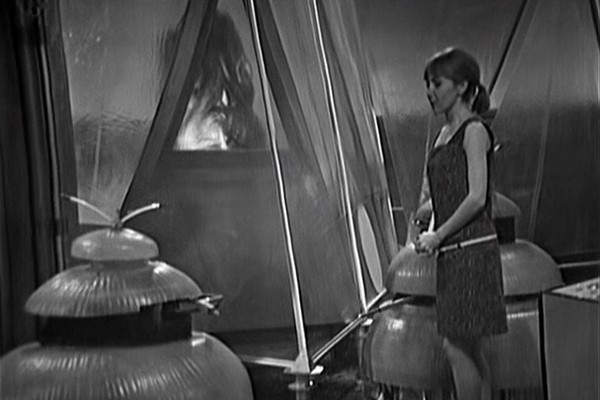
The Hartnell era often needs to be worked at in order for modern audiences to fully appreciate it. Filmed "as live", line fluffs are left in takes, boom mikes in shot aren't unusual, and, perhaps most crucially, it began as the "pre-quarry" era, with the majority of alien planets created on cloth backdrops. The Doctor isn't always the "Space Jesus" of the modern series, but instead a temperamental and often selfish individual, frequently the support to his companions, particularly in the earlier stories.
Such things are not a criticism here; while largely unpopular in a Doctor Who fandom where the programme has changed considerably, it's the belief at the Anorak Zone that this is the fundamental series, and arguably the best it ever was. Of the stories presented here, then maybe only a couple are truly below par, and this article is here to praise a charming run of television.
William Hartnell's often electric performance as the Doctor is so under-regarded today that his role has been reprised by other actors not once but twice. Such an idea suggests that the later producers believed the character was two-dimensional, and lacking depth, easily able to be imitated. As will be explored throughout this ranking, the first Doctor was a multi-faceted one, not just the "grumpy old man", but often one of the more overtly humorous Doctors, and frequently, despite his reputation, one of the most lovable.
However, the idea of William Hartnell producing a performance of less than three dimensions can be laid at the door of Galaxy 4. He does seem to be going through the motions in a very banal "planet of the evil women" plot, one which reworks the familiar tropes of the first Dalek story without any great excitement. Each episode drags by with very much a "pulp SF" bent, and long stretches of characters delivering exposition to one another. Though the real issue is that, for a four-part story, there's only enough plot to sustain two episodes.
Galaxy 4 was also, sadly, the final Doctor Who story to break the UK TV viewing Top Twenty for many years. After The Web Planet the series had settled into a format of a "first night" viewing spike, where viewers would look in on each new story, before rapidly dropping in numbers, save for The Chase, which maintained most of its audience. A couple of later Hartnell episodes even fell out of the Top Hundred altogether, and it wasn't until the final episode of The Dæmons in 1971 that the series would revisit the Top Twenty.
It should be acknowledged that, in an age where Doctor Who topping the charts is no longer a novelty, TV in the 60s and 70s was a more competitive environment, where an episode of Doctor Who could, for example, get 11 million viewers (The Curse of Peladon episode two, 1972) and still be lower rated than 19 other programmes on TV that week.
This story was the Hartnell with the most recent recovery of missing material, with Episode Three returned to the BBC archives in 2011.
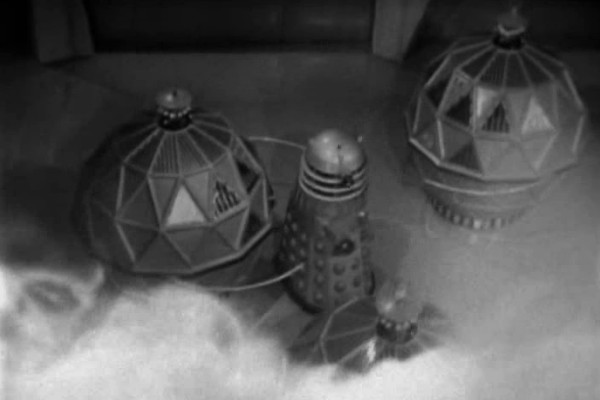
If this was a ranking of Hartnell stories by how loved they are, then The Chase would be far, far higher. On a purely subjective level it may be the most flat-out entertaining of his Dalek stories, but objectivity has to play a part, even in rankings like these, and The Chase really is a shambolic mess.
Haphazardly directed and with uncustomarily poor performances from William Russell and Jacqueline Hill - both of whom are clearly Demob Happy - it's a sad swansong for them both, far from an effective showcase for arguably the greatest ever companions in the series.
The serial ends with one of Hartnell's most memorable line fluffs, as he observes that Ian and Barbara could be a "couple of burnt cinders floating around in Spain - in space." While Hartnell's line fluffs are amusing on some level, it's also a sign of the stress he was under, and an indicator of illness, which, as was later revealed, was the onset of Arteriosclerosis.
However, apologists often point towards The Massacre as proof that Hartnell's stumbles were deliberately part of the character, as there he plays a dual role without a single mistake. This is true, but The Massacre is a story without a single mistake in either role. What's notable is that Hartnell's worst line fluffs are in the science fiction stories which he clearly didn't understand as well - or have as much affection for - as the historicals.
It's also notable that when he's in shorter scenes, such as The Aztecs, he's able to deliver a performance more befitting his talents under the gruelling "as live" recording schedule. Taken as a whole, there's the impression that Hartnell's "fluffs" were far more prominent than they actually were; watching just the historicals in isolation shows a very different story, and many of the "stumbles" were, in fact, deliberately part of the character.
Doctor Who was recently streamed on Twitch, traditionally a gamer platform, where not only did the Hartnell era get appreciated, trending on Twitter a few times as a result, but also led to many memes, including Ian's "London 1965!" from this story. If all of that is meaningless to you, then you're not alone... it's a different generation now, and, while only a few thousand watched on the platform, it's at least nice to know that these early stories are still capable of charming a new generation.
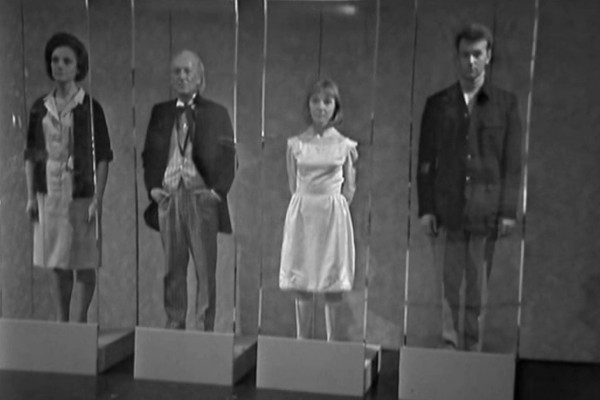
William Hartnell stories don't tend to rate highly with Doctor Who fans in general. Doctor Who Magazine ran a poll for its fiftieth anniversary, where only the three, non-Chase Dalek stories broke the top 50 (the top thirty in just original series stories), but little else. Of course, such viewpoints reflect a younger readership in the main, and views are subjective. The concept that the majority of fandom regards the entire era of William Hartnell to be inferior to Remembrance of the Daleks may take some getting used to, but such is democracy.
On the other side of the scale, there are stories like The Space Museum. So badly regarded it ranked as the tenth worst Doctor Who story of all time (eighth if only the original series is counted), it is, sadly, perhaps one where it's hard to argue too much with its placing. Featuring 1930s serial "aliens" with "ray guns", the story is cheaply made, very badly directed and poorly acted by the guest cast. (As said cast were, in many cases, experienced actors, it suggests that Mervyn Pinfield's awkward, stagy direction may have been at fault).
It's a shame, because it has a strong idea at the centre of it, and an intriguing first episode where the TARDIS crew see themselves as exhibits in a museum after they've jumped a "time track", essentially seeing their own future. This eerie sense of inescapable destiny informs the story, along with the charm of the regulars - though Hartnell being on holiday during the third episode doesn't help the stolid pace. Out of 155 original series Doctor Who stories, this probably fits in somewhere in the bottom 40... and only manages that high because of most of the series from The Twin Dilemma onwards.
One notable part of the story is how out of character Ian Chesterton seems, getting into karate fights and threatening people at gunpoint. In hindsight, it might just be a natural progression of their adventures taking their toll... The Aztecs showed us that a battle-hardened Aztec warrior could be beaten in hand-to-hand combat by a domestic science teacher, and led to Ian accidentally killing said warrior.
This followed a story where a Voord also fell to his death as a result of Ian's actions... by the end of the first season he's talking about how he might have shot someone in the French revolution. Although Ian would presumably have done national service, he's gone from a very placid high school teacher and into a man on the edge... the strange events of this story having tipped him over.
The talk of revolution adds a political dimension to the series, but it's buried beneath sub-par performances and an underdeveloped script. Most frustratingly, the first-class idea is got out of with a "cheat", whereby an immutable future just simply doesn't happen. The DVD has a commentary track with William Russell and Maureen O'Brien, joined with writer Glyn Jones and moderated by Peter Purves. Jones rues that so much of his script was lost in rewrites, including the fact that it was supposed to be a comedy: the alien Moroks and their leader Lobos a deliberate allusion to "morons" and "lobotomised". However, Maureen O'Brien lays the real blame at Pinfield's feet, noting that viewers are watching "actors who are totally without direction."
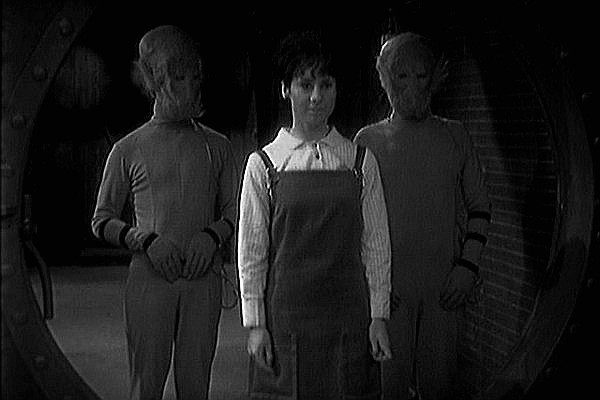
There's no set format for what length Doctor Who stories should run. Longer stories - generally made to save on building new sets - have their place, if the story has the extra depth and subplots to accommodate it. But while the Troughton and Pertwee eras had a high percentage of stories above four episodes (71% and 62.5% respectively), less than 40% of the Hartnell stories ran over this length.
Although far from an absolute rule, the four episode length is almost a perfect one for Doctor Who, allowing for enough story and character development without it dragging. 18 of the Hartnell stories were this format, and from Tom Baker onwards it very much became the "standard". This is particularly notable for The Sensorites, a decent four-part story which is unfortunately told over six episodes. It begins to sag badly in the middle, but watched as intended, rather than all in one go, it can charm.
It's a shame because, while perhaps no great, there's lots to admire in the story. Carole Ann Ford praises it for being the story to show the latent telepathic powers of the Doctor's granddaughter, Susan, the theme of mental possession is disturbing, and there's an ambitious shot when the travellers first leave the TARDIS, taking the viewers from inside the large console room and outside the small police box.
The Hartnell era was made when TV was still in its relative infancy, so some of the techniques used can be somewhat rudimentary. As a result modern viewers may have to "buy in" to the situations, viewing it more as theatre on television rather than a slick product with a Hollywood lexicon. If anything, such matters only add to the appeal, though it's notable that - particularly in episode four - there are many boom mikes in shot throughout, even more than the usual average. The Sensorites themselves, while a nice creation of "grey" aliens, also match the regulars in fluffed lines.
Lastly, there's a fan myth that the Sensorites can't tell each other apart, but this isn't true... one of the Sensorites merely notes that some officials aren't well-known, and only seen by many "from a distance". His revelation that people can't tell the Sensorites apart isn't based on how they see each other, but how humans see them. (Interestingly, the Doctor uses the phrase "we humans" in this story...)
While everything is subjective, the Hartnell era of Doctor Who is so much loved here at the Anorak Zone that even lowly-ranked entries like this are decent, watchable entertainment... they're only low down by comparison with the rest of Hartnell's stories. To put this in some perspective, then of the 155 stories from the original series, The Sensorites would likely fit somewhere in the top 70.
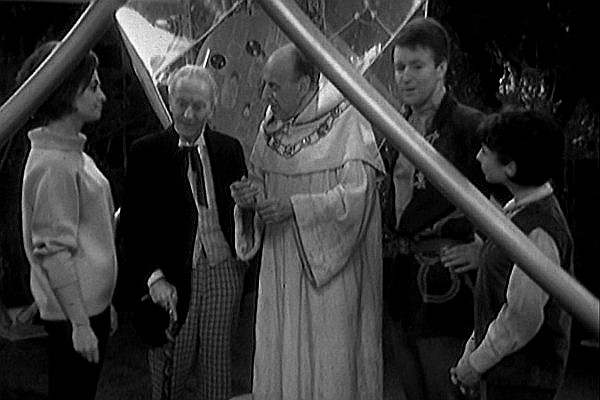
The Keys of Marinus is a classic example of a story curtailed by production issues. Hastily written to fill a gap in production, the typically flat Terry Nation script has to work around William Hartnell's first holiday. With the series being screened virtually all year round (the era lasted for just under three years on television, of which the series was off air for less than six months) then holidays were a necessity. Not only is Hartnell absent for the middle two episodes, but the serial was filmed in an exceptionally small studio and it shows, with characters frequently pointing to "views" offscreen, as there isn't the room for long shots.
For a quest saga that's very much "Saturday morning serial", it does contain some adult themes, including domestic violence. While far from the era at its best, even the worst of the Hartnell era is as charming as a cat playing a fiddle. Unfortunately this story sees the two female companions very much in a "damsel in distress" mode, and it was instrumental in Carole Ann Ford deciding to leave the series.
For the Doctor Who DVD releases, a group informally known as "the restoration team" worked on the stories, providing extra care, even returning video sequences back to their original video look. Sadly, for every success they put into the releases, there are detractions, with some of the episodes having "fixes" applied, which goes against the very nature of restoration.
In 2000, remarks were made about the restoration work done for a repeat broadcast of the Jon Pertwee story The Silurians. Some poor edits were left in and not removed, because "this would not be in the spirit of restoration, and the viewer would not be seeing a fair representation of the story as it originally was." However, it seems the temptation to "fix" things was too great, as by 2008 the same team were stating on their forum the somewhat shocking remark that "if you're looking for faithful adherence to the original production, you're not going to find it on any of the Doctor Who DVDs, I'm afraid..."
The William Hartnell era has its fair share of "fixes", including the sound of a Zarbi crashing into a camera toned down, and boom mikes "painted out", often making the picture even worse. Such things are arbitrary, as a multitude of failed props and fluffed lines litter most of these stories, yet are left untouched. Perhaps most distracting are the end credits to Hartnell episodes, which, rather than being "cleaned up", are made from scratch, causing a jarring effect as 60s television meets something very obviously made in the following century.
Yet perhaps the most jarring of all is that a few seconds of footage was discovered to be missing from this story. Rather than let the audio play out to blackness, or keeping the jump cuts, an attempt to "morph" actor Robin Phillips between the two existing shots is made. As an experiment, it fails, with an eerie, herky-jerky "movement" which, if nothing else, does at least add to the hallucinatory effects of the episode. And, while even the team admitted it wasn't fully successful, this was at least at an attempt to bring things back to how they were, rather than how they could have been.
Such things tend not to be discussed among Doctor Who fandom, where pointing out that such "fixes" aren't necessary is regarded as "negative", or, bizarrely, a "personal attack" on the team, and anyone drawing attention to them is shot down with statements like "why does it matter?" To which the answer has to be... if these things are so unimportant, then why do them in the first place? Ultimately "restoring" a programme is just that... the restoration team did a great job cleaning up the episodes as they were, it's just a shame they fell into the trap of changing them to how they could have been.
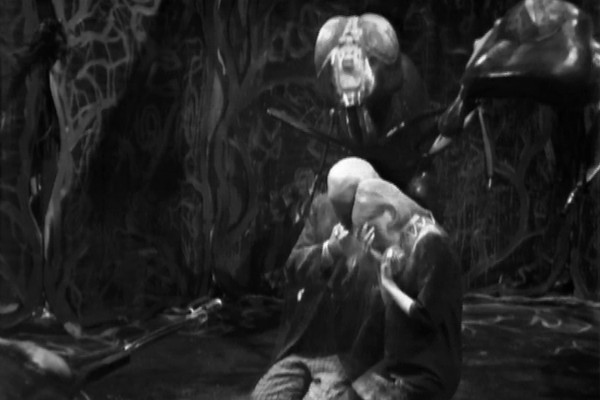
The Web Planet was the highest commercial peak of the Hartnell era, with two of its episodes in the Top Ten of that week. Hartnell's Who had seen the series enter the viewing Top Ten 8 times (the Top Twenty 32 times) and the broader, more populist season two was the real success of the series. The fact that it's the most complete of the 60s seasons, with only two episodes missing, also helps modern viewers to explore the stories on VHS and DVD.
Sadly, it's these releases that saw the The Web Planet's reputation plummet. What was, at the time, quite ground-breaking and experimental looks archaic over fifty years later... what was once so different now looks like a Czechoslovakian primary school play performed on crack. It's also one of the most tampered-with DVD releases, where various unintended noises are toned down throughout, seemingly in the belief that if a creaky floor can't be heard then viewers will mistake this tale of men in giant butterfly costumes for the work of Ken Loach.
Yet despite its flaws, if viewers are prepared to look past the obvious shortcomings of the serial, it's really quite something. The Anorak Zone would never condone alcohol abuse, but watched under the influence this one really does begin to make a lot more sense. Often derided by fandom as "boring", then while it perhaps doesn't need six whole episodes to tell its tale, it's hard to fathom how Vaseline on the camera and men running around dressed as giant ants could ever be termed "boring". The dullest entry is the fifth episode, where the laboured, staccato speech patterns of the Menoptera can drag the narrative down, but a final, eerie confrontation with the Animus in episode six is a standout.
The Web Planet was so well-regarded at the time that it was one of three stories chosen to be novelised, written by the serial's writer Bill Strutton as Doctor Who and the Zarbi in 1965. (The first was the original Daleks story, written by script editor David Whitaker as Doctor Who in an Exciting Adventure with the Daleks in 1964, and the last was an adaptation of The Crusade, again by Whitaker, under the title Doctor Who and the Crusaders. All three were published by Frederick Muller and were the only Doctor Who novelisations in the 60s.)
In 1973 the publishing rights to the three novelisations were taken up by Target, who went on to launch a successful range based on the series, with only five stories (due to rights issues) going unwritten. All of the Hartnell stories were adapted, with fourteen of them being authored by the writer (or co-writer) of the original screenplays.
For one of the series' most bizarre, original stories of all time, it's perhaps apt that it's also the first to feature scenes with guest characters after the TARDIS has left. Up until this point viewers would be taken with the TARDIS crew on continuing adventures, but here the audience is left behind on the planet, with over two minutes of the insectoid creatures talking amongst themselves.